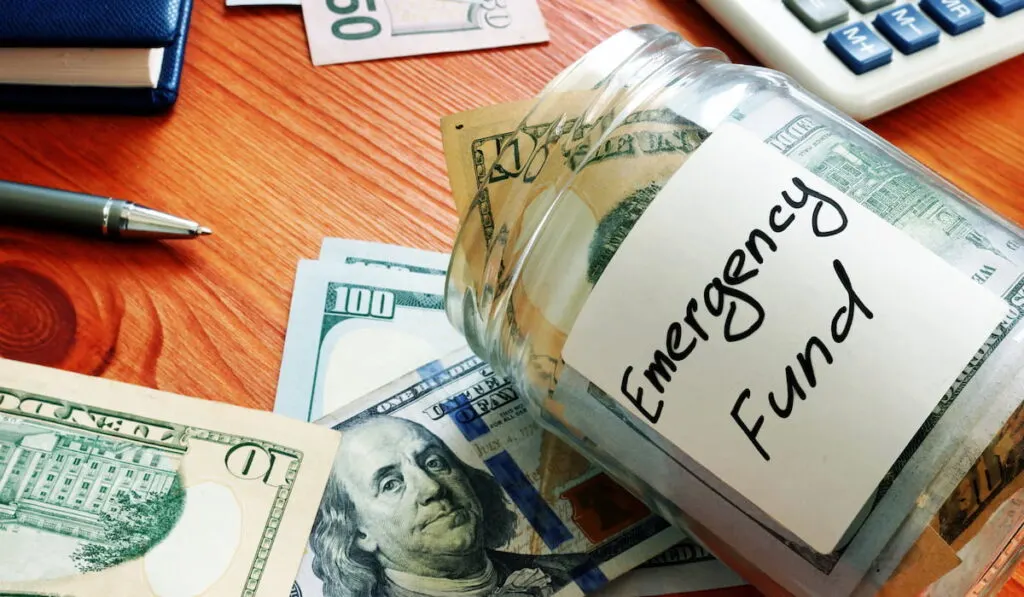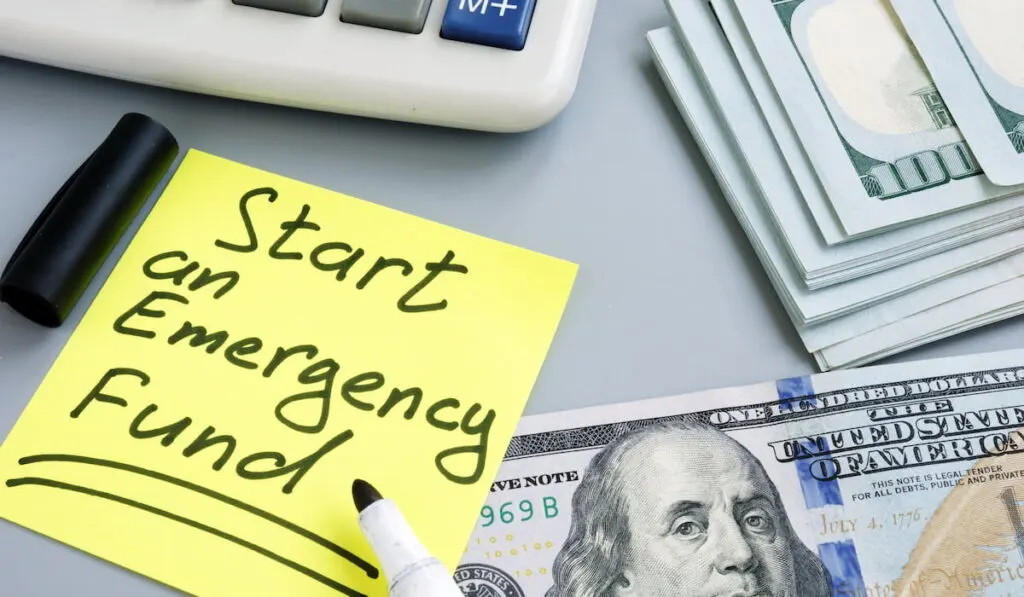*This post may have affiliate links, which means I may receive commissions if you choose to purchase through links I provide (at no extra cost to you). As an Amazon Associate I earn from qualifying purchases. Please read my disclaimer for additional details. Thank you for supporting the work I put into this site!
We live in an era where people are spending money more than ever. As a result, people find it very difficult to understand the concept of saving money and planning their finances.
Saving money and having an emergency fund gives you an advantage in every financial situation. When you know that you have something to fall back upon in terms of money, your confidence starts building up.
When something comes up, your emergency fund savings help you to get through it without causing any interruption in your day-to-day expenses.

Saving money is an idea that has no down sides. It will get you through financial problems and the unforeseen struggles which you might have had to face if you weren’t thinking ahead to have an emergency fund.
The question is, what should be considered as the minimum amount to have in the emergency fund?
Categories of Emergency Funds
Your Emergency fund can be divided into four categories: starter, minimum, average, and maximum. Let’s discuss all the categories to help give you an idea about which emergency fund to build.
Starter
We all have to start somewhere and the goal here is to have an early accomplishment. When you’re first starting to work towards a savings goal it can be hard.
Hard to earn the money and hard to stay in the right mindset of not spending it. For this reason, to get started, set your amount low. How much you decided to save for your starter emergency fund is up to you but I recommend it be no less than $250.00.
Then, you’ll want to slowly increase your goal amount until you have one months expenses saved for a rainy day.
Minimum Category
In the minimum category, one should have three-months’ worth of expenses saved. So, for example, if you spend an amount (X), including all bills (electricity, rent, food, traveling and other overhead expenses) then you should at least have that amount times three (3X) in your minimum emergency fund.
With this category, you are prepared for any emergency that comes your way without causing any interruption to your monthly obligations.
Average category
When you have people who are directly or indirectly dependent on you financially, the burden of saving more becomes more important as any mishap in your life or their life could cause big problems.
To avoid this, you should have at least six months’ worth of your expenses as your emergency fund. If your expenses are equal to (X) then you should probably have (6X) in your average emergency fund savings.

Maximum category
Once you have mastered the art of saving, you will be able to keep increasing your emergency fund until you have an entire years’ of expenses as an emergency fund.
When you are able to do that, you are not only gaining confidence, but also security in terms of finance and stress-free life. As you start earning more, you should start investing more too, but you should always keep an accessible emergency fund that will be able to help tide over any major financial crisis.
The different categories of emergency fund cater to different financial needs and emergencies. Therefore, one should strive to achieve all three.
Now that you know the three categories of emergency funds, you can decide what suits your requirements and situation the best and then get started. Once you start and persist, you will be able to grow all three funds.

